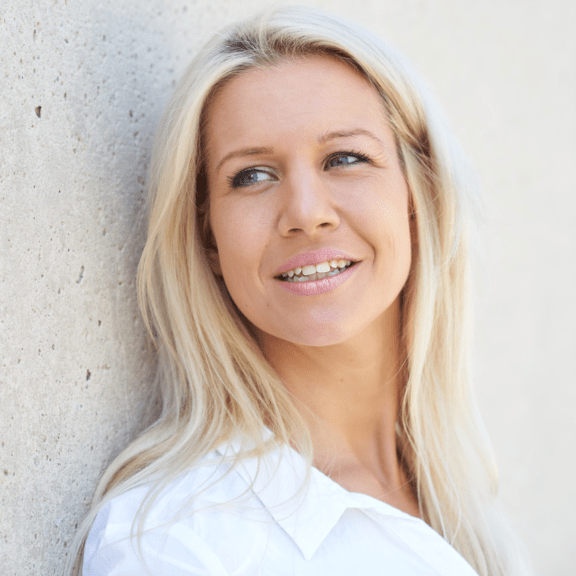Better be Bold: The fine line of self-presentation #DHDL
Many founders find it difficult not to openly communicate the weaknesses of their business, as things like SWOT analysis are still taught as the non-plus-ultra of management, especially in traditional business studies programmes.
Wednesday,
29.05.2024

The start-up pitch is definitely not an opportunity for self-criticism. Many founders find it difficult not to openly communicate the weaknesses of their business, as things like SWOT analysis are still taught as the non-plus-ultra of management, especially in traditional business administration programmes. But investors themselves still have plenty of questions about potential weaknesses.
But it also works the other way round: if start-ups interpret the facts too conspicuously in their favour, they can also put investors off. Better be bold provided us with a few good examples of this fine line on “Die Höhle der Löwen”.
Of course, the lions were once again very much concerned with the valuation, as the Better be bold founders’ offer of 400,000 euros for 15% and thus a company valuation of 2.67 million euros was not exactly at the lower end of the scale that TV investors see.
However, the team, which had launched a care range for bald people, must have realised this and seemed well prepared. And good preparation for an appearance in front of investors, both inside and outside the cave, also includes a strategy to present the advantages of your own business as well as possible.
This requires all the more preparation, the less the “classic” key figures such as turnover and profit are sufficient to argue the desired valuation. For an initial starting point, investors like to calculate the so-called “multiple”: the value by which turnover, for example, must be multiplied in order to arrive at the desired valuation. As Better be bold closed the last financial year with a turnover of 200,000 euros, the valuation of 2.67 million results in a multiple of just over 13, which is already very high for the cosmetics industry.
Multiples vary greatly depending on the industry and business model – in addition to many other factors.
Especially if the products are easy to copy and difficult to protect – as the founders later had to admit in this case – the risk is higher and the usual multiples tend to be in the low to mid single-digit range.
But since this is only an initial assessment and, as already mentioned, many other factors play a role, the negotiation is far from over.
The founders argue in this case, for example, with their good margin, list their trading partners and listings and explain that they already sell in 14 countries. They even emphasise that it is therefore a “very international topic”.
The lions initially seem very impressed, but the sales figures had not yet been discussed at the time. Tillmann Schulz then promptly asks about these, and the 200,000 euros generated are met with disappointment.
Carsten Maschmeyer then soon asks more precisely how much of this turnover is attributable to foreign countries, which is answered with 30,000 euros. However, this sum is far too little for the lions for the strong emphasis on the “international theme”.
In the end, Tillmann Schulz will explain to Tijen Onaran, who was impressed by the impressive figure of 14 countries, why. The trade lion would divide the 30,000 euros in foreign sales by 14 countries. Strictly speaking, Germany was probably included in the 14 countries as the source of the other 170,000 euros in turnover, so that it would only be necessary to divide by 13 countries to determine the turnover per country.
However, the turnover of just over EUR 2,300 calculated in this way also speaks a clear language: this is not yet too high. During due diligence, a professional investor would probably delve even deeper into the structure to see how widely distributed these sales are. For example, whether there are one or two countries to which you already sell quite well (for German start-ups, these are often the other DACH countries) and the remaining 11 countries only record individual orders. Or whether there are several countries where more exciting figures are already being generated, even if only on a smaller scale.
So did the founding team talk themselves up a little too well here? In principle, you should of course present yourself well in the pitch and emphasise all the advantages of the business. However, a little caution is called for when it comes to the key figures: an overly positive presentation could be perceived by investors as window-dressing or mere self-promotion at any price.
A good exercise in this regard is to discuss possible counter-arguments during the preparation phase and, if necessary, to shift down a gear in the wording. After all, you should of course still mention your successes.
The Better be bold founders are ultimately criticised for their wording and their valuation, but still receive an offer as their topic simply convinces Nils Glagau and Tillmann Schulz. However, they want 30% of the company shares instead of the 15% offered, halving the original valuation proposed.
They then no longer respond to the founders’ counter-offer, 20% is still far too little for them and they already consider the proposed 30% to be generous, so in the end they also back out.
This case shows once again how differently investors react: Ralf Dümmel had long since pulled out simply because of the valuation, Carsten Maschmeyer took the founders’ presentation apart the most, and the bidding duo argued against it, but ultimately sought to work together after all.
Once again an example that preparation for negotiations with investors is simply everything – and that this also includes consciously dealing with good and less good company figures. Because investors scrutinise everything. An overly positive presentation can backfire on you – but it doesn’t have to be the deciding factor for the outcome of the negotiation. So: Better be bold? That’s probably a question of type…
Photo (above): TVNOW / Bernd-Michael Maurer

Ruth Cremer
Ruth Cremer is a mathematician and consultant as well as a university lecturer in the field of business models, key figures and financial planning. As a former investment manager, she knows what investors look for and also helps with pitch and document preparation in the investment or acquisition process. Since 2017, she is involved as an external consultant in the selection and preparation of the candidates in "Die Höhle der Löwen".
